I don’t know how many of you were dragged to your cousins’ marriages. As a child, those were the things I hated the most. To attend a wedding where you don’t know anyone, and just need to be present since it’s a must. I still don’t get it; why should a child attend a marriage where he does not know the bridegroom or bride. Sitting on those rickety chairs with a portion of food or something is given to you to shut up should not count as a marriage experience, but again who am I to complain. Marriage is executed so that its goal is to ignore the bride and groom and instead work towards caressing the egos of some obscure Bua, Mama, or Mami.
 Sitting through such 20-30 odd marriages where I never met the bride or groom, yet had my belly filled did have an impact on me; it made me question what the Bleep is this marriage shit? Why is this the focal point of one’s life, where I would be dragged to despite my board exams? When people who attend it are more interested in queueing for the food, rather than the rituals, where people thought, it was Mela, meet each other. Especially those wrinkled grannies who would ask you the million-dollar question, “remember me? I had changed your diapers when you were 3 months old, or you cried for blah blah when you were 1 year old” Now I am not Abhimanyu to remember people from mothers womb. Expecting one to remember his first two years is just ..anyway. To these grannies, rather than answering, I used to ask, “why are people married?”
Sitting through such 20-30 odd marriages where I never met the bride or groom, yet had my belly filled did have an impact on me; it made me question what the Bleep is this marriage shit? Why is this the focal point of one’s life, where I would be dragged to despite my board exams? When people who attend it are more interested in queueing for the food, rather than the rituals, where people thought, it was Mela, meet each other. Especially those wrinkled grannies who would ask you the million-dollar question, “remember me? I had changed your diapers when you were 3 months old, or you cried for blah blah when you were 1 year old” Now I am not Abhimanyu to remember people from mothers womb. Expecting one to remember his first two years is just ..anyway. To these grannies, rather than answering, I used to ask, “why are people married?”
Like you would have guessed, the answer was “once you grow up, you will know,” some answered, “that’s the tradition,” or some would outright call me rude. None cared to really explain the WHY, actually.
This question has remained unanswered for a very long time. Still, another question was hidden at its root “what is marriage?”
Every religion rather culture has this concept of marriage in some form or other. The basic premise is marking one person for another for, say, eternity. This marking can be done in many forms, exchanging rings, vows, accepting some repetition of words, or even some other form. Even in India, marriage varies a lot from north to south or west to east. One common thing is fire and the 7 Pheras. This is the exchange of vows with fire as witness. Fire or Agni has been the most important God for a very long time. His duty is to carry our offerings to God and so on. Rigveda begins with praying to him; almost every ritual related to human life is done, performed with his presence. In the simplest form, the daily diya lighting is nothing but inviting his presence. For the prayers to reach the almighty, the presence of Agni is essential. Agni can mean a lot of different things; we’ll come to that a bit later.
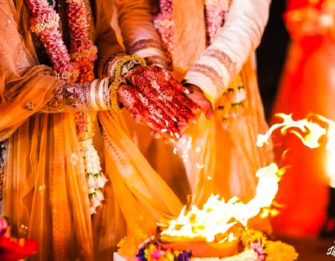
This fits well as why Agni is used to during the 7 Phera, as the couple is registering their wishes/vows with God via Agni. Now that I had understood where the registration was being done, the question of marriage still alluded to me.
Hinduism has these eight types of marriages. These marriages are not available as a list of options to pick from but rather categorization after the event.
The eight marriages are as follows
- Bramha Marriage: The bridegroom family officially asks the bride’s family for marriage. Once all agree, marriage is conducted with kanyadan.
- Daiva Marriage: The bride is offered as some Dakshina for any services rendered. It’s a marriage where the bride’s father looks for the bridegroom. It is different from the Brahma marriage as women are treated as an object.
- Arasha Marriage: When the bride is married off the some Sage or Rishi. Here the bride’s father gives nothing to the bridegroom but might actually beget something like a cow or so.
- Prajaptya Marriage: This is similar to Brahma marriage. There are no expensive rituals, just garlands are exchanged in the presence of the families with their consent. Its the money saver package
- Gandharva Marriage: This is quite a simple form, where the bride and groom just accept each other, exchange garlands. This usually happens in the absence of parents or somewhat against their wishes/consent. No formal rituals, no approvals from parents are conducted.
- Asura Marriage: This marriage is where the bride’s father gives away his child in exchange for large sums of money, wealth, or some material gain, wherein the bride’s consent does not exist. Here the bride’s father may or may not be under duress.
- Rakshasa Marriage: This is forceful marriage when brute force is used to get married. This can be abducting, killing family, etc., to get married.
- Paischacha Marriage: This is the most atrocious form, where the bride before marriage would be raped, intoxicated, mentally disoriented. To seek revenge or establish authority, such a marriage would occur.
So a broad framework definition of marriage is clear. To put it even in simpler terms, marriage is a simple declaration towards the society at large on behalf of bride and groom that these two individuals are henceforth allowed to have sex, which would be considered fealty.
Why do I boil the whole marriage to just an act of sex? Well, that is the basis for procreation, and here again, it comes in our Agni. Agni, which was the mere fire of the Homa, can also be the burning desire to procreate. Rather this fire is essential for the consummation of at the marriage.
Our ancestors knew it very well and knew how to disguise it all to sanctify it with some rituals and called it the Vivah. But this has not been the case always. The marriage did not exist in any form, nor the 8 categories existed. In my burning desire for knowledge, I reached how it all began.
Now let me warn you, we are to tread into the Upanishads realm, an effortless yet complex source of knowledge. As much as it answers, it asks more. Upanishads are like the knowledge that one needs to learn but cannot be taught.
In Chandyog Upanishad is this story of a marriage. Shvetaketu, around the 10-year-old son of sage Uddalaka, performs their morning ablutions assisted by his mother. As his mother is providing water to Sage Uddalaka, another brahmin approaches her with a desire for sex. She readily agrees to it and goes with him. This angers Shvetaketu; he questions his father about how he can allow such a thing. To which his father answered, “Boy, that’s the rule since antiquity, I do not own her; she is free to decide what she wants.”
This is disagreeable to Shvetaketu; he says this shouldn’t be the case; a woman cannot just walk away. Later Shvetkatu became a great ascetic and established fidelity in cohabitation. He defined that woman beloved to husband; rather, she must only belong to the husband. The standard notion or pativrata came into existence. Thus, he designed the framework for marriage and decided what is moral and immoral within that framework.
Continued in : Part 2.
</










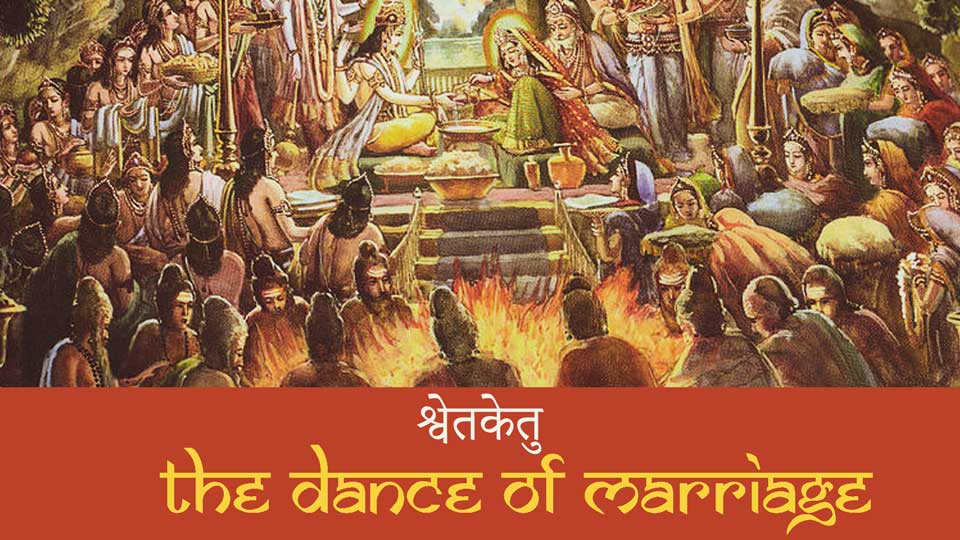

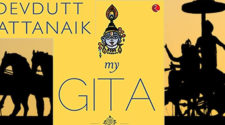
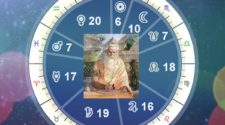
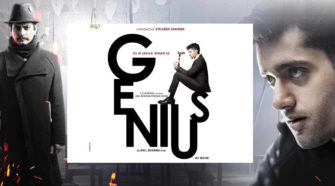
Seemed too bland and descriptive
thank you for the feedback.